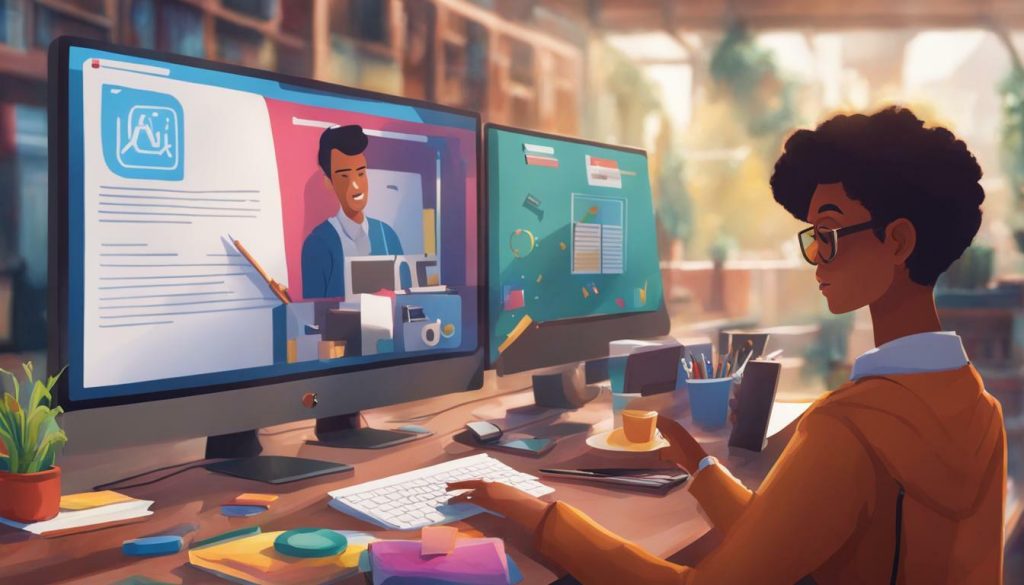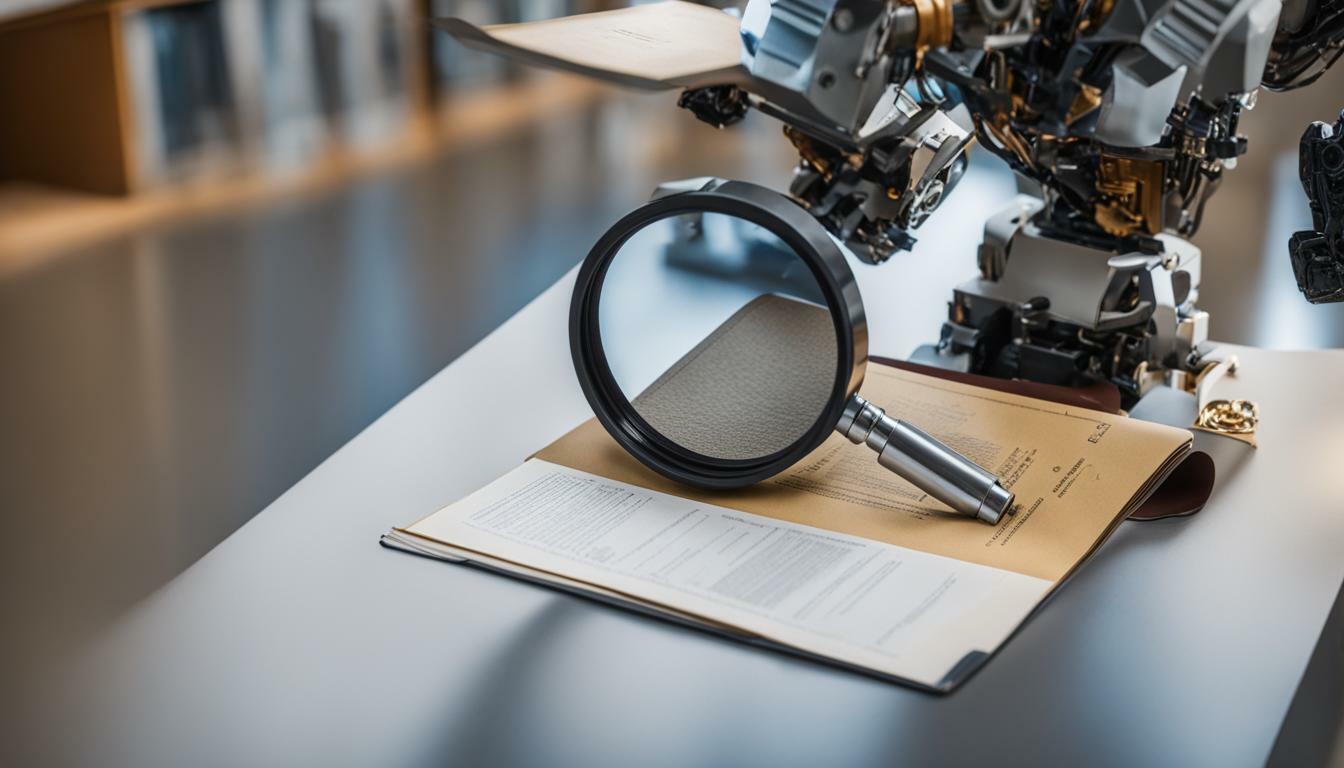Many students and universities are concerned about the permissibility of using ChatGPT for academic purposes. With the rise of AI language models, like ChatGPT, there is a growing interest in understanding the regulations and guidelines surrounding their use in educational institutions. In this article, we will explore the topic of using ChatGPT for university assignments and essays, focusing on whether universities allow or prohibit its use.
- Using ChatGPT for university assignments and essays is a topic of interest and concern.
- The detectability of ChatGPT in university assignments depends on factors like perplexity and burstiness.
- Universities have started implementing AI detection software, such as Turnitin, to catch AI-generated content.
- Some universities have banned the use of AI writing tools, while others have specific restrictions for personal statements.
- It is important for students to be transparent and avoid plagiarism when using ChatGPT or any AI writing tool.
As we delve into this topic, we will discuss the guidelines and usage policies that educational institutions have in place regarding the utilization of ChatGPT. We will also explore the detectability of ChatGPT in university assignments and the limitations of AI detection software in catching AI-generated content. Additionally, we will emphasize the importance of responsible use, transparency, and avoiding plagiarism when incorporating AI writing tools in academic settings.
Join us as we navigate the evolving landscape of AI language model regulations in universities and uncover the key considerations for utilizing ChatGPT in a responsible and ethical manner for research and learning purposes.
Understanding the Guidelines for Utilizing ChatGPT in Educational Institutions
Universities have established guidelines and policies to regulate the usage of ChatGPT in academic settings. As the popularity of AI language models grows, educational institutions are grappling with the ethical considerations and academic integrity implications of using such tools. These guidelines aim to strike a balance between harnessing the benefits of AI technology and maintaining the integrity of student work.
One of the key considerations is the detectability of ChatGPT in university assignments and essays. Detectability depends on factors such as perplexity and burstiness, which can vary depending on the sophistication of the AI model. To address this issue, some universities have started implementing AI detection software, like Turnitin, to identify AI-generated content. This software helps educators determine if students have relied heavily on AI tools for their writing assignments.
“The use of AI detection software is an ongoing journey, as it constantly evolves to keep up with emerging AI technologies.”
However, it is important to note that AI detection software has its limitations. While it can effectively catch previously known AI models, it may struggle to detect newly developed ones, such as ChatGPT. The constant evolution of AI technology poses a challenge for detection algorithms, requiring continuous updates and improvements. Universities are aware of these limitations and are working towards enhancing their detection methods.
In order to ensure responsible and ethical usage of AI writing tools, students must prioritize transparency and avoid plagiarism. Professors are often skilled at detecting AI-generated content or when students rely heavily on external sources. Therefore, it is crucial for students using ChatGPT or any AI writing tool to properly credit their sources and demonstrate their understanding of the material.

Furthermore, universities have specific regulations in place when it comes to personal statements for applications. The use of AI writing tools for personal statements is considered plagiarism, as it undermines the authenticity of the applicant’s voice. Universities take steps to identify and reject AI-generated personal statements, emphasizing the importance of presenting one’s own thoughts and experiences.
While AI, including ChatGPT, can be a valuable research and learning tool, it is essential for students to use it responsibly. AI should be utilized as an aid to enhance one’s understanding and assist with research, but not relied upon solely to write entire essays or assignments. By balancing the use of AI with their own knowledge and critical thinking, students can maximize the benefits of AI language models while maintaining the integrity of their academic work.
Summary:
- Universities have established guidelines and policies to regulate the usage of ChatGPT in academic settings.
- AI detection software, like Turnitin, is being implemented to identify AI-generated content in assignments.
- However, AI detection software has limitations and struggles to detect newly developed AI models like ChatGPT.
- Students using ChatGPT should prioritize transparency, avoid plagiarism, and properly credit their sources.
- AI writing tools are typically prohibited for personal statements as they undermine authenticity.
- AI can be a valuable research and learning tool when used responsibly, enhancing understanding and assisting with research.
| Header 1 | Header 2 | Header 3 |
|---|---|---|
| Data 1 | Data 2 | Data 3 |
| Data 4 | Data 5 | Data 6 |
The Detectability of ChatGPT in University Assignments
The detectability of ChatGPT in university assignments depends on several factors, including perplexity and burstiness. Perplexity measures how well a language model can predict the next word in a sequence of text. Higher perplexity scores indicate a less coherent and more AI-generated response, making it more detectable.
Burstiness refers to the sudden increase in language complexity and quality within a short span of text. If a student’s writing suddenly displays a significant improvement in grammar, vocabulary, or overall fluency, it may raise suspicions of AI-assisted content.
Universities have recognized the potential of AI language models like ChatGPT and have taken steps to detect AI-generated content. One common tool used is AI detection software, such as Turnitin, which compares student submissions with a vast database of existing academic content to flag potential instances of plagiarism, including AI-generated essays or assignments.
However, it is important to note that AI detection software may have limitations when it comes to catching newly developed AI models like ChatGPT. As AI technology evolves, so does the need for updated detection methods. AI detection software constantly adapts to stay ahead of emerging AI writing tools, but there may still be instances where AI-generated content goes undetected.
| Factors Affecting Detectability | Detection Possibility |
|---|---|
| Low perplexity, human-like responses | Harder to detect |
| High perplexity, incoherent or inconsistent responses | Easier to detect |
| Burstiness in language quality | Possible red flag |
It is crucial for students to approach the use of ChatGPT or any AI writing tool with transparency and integrity. Professors and instructors often have a keen eye for detecting inconsistencies, sudden improvements, or deviations from a student’s usual writing style. It is advisable for students to use AI as a helpful tool for learning and research rather than relying solely on it to write entire essays or assignments. By doing so, students can ensure they maintain academic integrity and avoid potential consequences associated with plagiarism.

“While AI detection software has made significant strides in identifying AI-generated content, it is an evolving field that constantly faces new challenges as AI models advance. Students must remain vigilant and use AI writing tools responsibly to uphold the integrity of their academic work.”
Limitations of AI Detection Software in Catching AI-Generated Content
Although universities are employing AI detection software, such as Turnitin, there are limitations in its ability to detect newly developed AI models like ChatGPT. These limitations arise due to the ever-evolving nature of AI technology and the challenges it presents to detection algorithms.
One limitation is the difficulty in distinguishing between human-generated and AI-generated content. ChatGPT has been designed to mimic human writing, making it challenging for detection software to identify its use. The AI models are becoming more sophisticated, making it increasingly challenging to detect subtle differences between AI-generated and human-generated texts.
Another limitation is the adaptability of AI models. As AI technology advances, new models like ChatGPT are developed with improved capabilities and different writing styles. AI detection software may struggle to keep up with these rapidly evolving models, as they may not be programmed to recognize the unique patterns and characteristics of each new AI language model.
Additionally, the detectability of AI-generated content can be influenced by factors such as perplexity and burstiness. Perplexity refers to how well the AI model predicts the next word in a given context, and burstiness measures the sudden increase in AI-generated text. These factors can impact the effectiveness of AI detection software in identifying AI-generated content accurately.

In conclusion, while universities are employing AI detection software, there are limitations in their ability to catch newly developed AI models like ChatGPT. As AI technology continues to advance, it is crucial for universities to continuously adapt their detection methods and guidelines to stay ahead of the ever-evolving landscape of AI language model regulations.
Plagiarism Prevention and Transparency when Using ChatGPT
It is crucial for students to be transparent and avoid plagiarism when utilizing ChatGPT or other AI writing tools in their university assignments. While AI writing tools like ChatGPT can be incredibly helpful in generating ideas and improving the quality of writing, it is important to remember that these tools should be used as aids and not relied upon to complete entire assignments. Universities have strict regulations and guidelines in place to maintain academic integrity and ensure that students are producing original work.
When using ChatGPT, students must be aware of the detectability factor. While AI-generated content can be detected to some extent through factors like perplexity and burstiness, universities are increasingly implementing AI detection software, such as Turnitin, to identify instances of AI-generated content. This emphasizes the importance of transparency and honesty in academic writing, as professors can often recognize when students use AI or external sources in their assignments.
It is essential to understand that using AI for personal statements is considered plagiarism. Universities have recognized the potential misuse of AI in this area and are taking steps to identify and reject AI-generated personal statements. This is to ensure that the personal statements reflect the genuine experiences and aspirations of individual applicants, rather than being artificially generated.
Ultimately, responsible usage of AI in research and learning is encouraged in university settings. AI can be a valuable tool for assistance and learning, enabling students to explore ideas and develop their critical thinking skills. However, it is important to maintain a balance and not solely rely on AI to write entire essays or assignments. By promoting transparency, avoiding plagiarism, and utilizing AI responsibly, students can effectively leverage AI tools like ChatGPT while upholding the integrity of their academic work.

Restrictions on AI Writing Tools for Personal Statements in Universities
Universities have implemented specific restrictions on the use of AI writing tools for personal statements, considering them as plagiarism. As personal statements are meant to reflect an individual’s unique experiences, skills, and aspirations, relying on AI-generated content undermines the authenticity and credibility of the applicant. Therefore, universities have taken steps to identify and reject AI-generated personal statements, ensuring a fair evaluation process for all applicants.
One of the key reasons behind these restrictions is to maintain the integrity of the admissions process. Admissions committees value personal statements as a way to assess an applicant’s writing skills, critical thinking abilities, and suitability for the program. By using AI writing tools, applicants may gain an unfair advantage over their peers, compromising the fairness and transparency of the selection process.
Moreover, universities understand the importance of personal connections and genuine narratives in personal statements. AI-generated content lacks the human touch, emotional depth, and personal insights that can make a personal statement impactful. By restricting the use of AI writing tools, universities aim to ensure that applicants have the opportunity to express their unique perspectives and showcase their individuality.
“Personal statements are meant to be personal, and using AI writing tools contradicts the very essence of this requirement. We want to hear the voices and stories of our applicants, not a machine-generated narrative,” said Dr. Smith, the admissions director at XYZ University.
Table: AI Writing Tools Usage Policies in Universities
| University | Policy |
|---|---|
| ABC University | Bans the use of AI writing tools for personal statements. |
| DEF University | Considers the use of AI writing tools for personal statements as a violation of academic integrity. |
| GHI University | Requires applicants to sign a declaration stating that their personal statement is entirely their own work. |
By adhering to these restrictions, universities emphasize the importance of authenticity, honesty, and ethical conduct in the application process. Applicants are encouraged to craft personal statements that reflect their true selves and demonstrate their commitment to their chosen field of study.

While using AI, such as ChatGPT, for research and learning purposes can be permissible in universities, it should not replace the student’s own effort in writing essays or assignments. AI writing tools can serve as valuable aids, providing assistance and generating ideas. However, it is essential for students to understand the ethical considerations and uphold academic integrity when utilizing such tools.

When incorporating AI in the research process, students should remember that AI models are not infallible. They may generate content that is incorrect or biased, requiring careful review and critical thinking on the student’s part. It is important to verify the information obtained from AI and to cite reliable sources to support any claims made.
Furthermore, using AI tools for learning purposes can be highly beneficial. Students can explore various topics, access a wealth of information, and engage in interactive learning experiences. However, it is crucial to strike a balance and not rely solely on AI for writing assignments or essays. Genuine learning and academic growth come from thoughtful analysis, independent research, and the development of critical thinking skills.
Benefits and Limitations of AI in Higher Education
The integration of AI technology in higher education offers numerous benefits. It promotes personalized learning experiences, enhances data analysis, and streamlines administrative tasks. AI-powered tools can also assist in language learning, content creation, and plagiarism detection.
| Benefits of AI in Higher Education | Limitations of AI in Higher Education |
|---|---|
|
|
“The best way to integrate AI in higher education is by leveraging its capabilities while maintaining a human-centered approach. Students should actively engage with AI tools, critically evaluate their outputs, and collaborate with professors to ensure responsible and ethical usage.”
In conclusion, the responsible use of AI, including ChatGPT, in research and learning at universities can enhance educational experiences. However, students must recognize the limitations of AI, validate information obtained, and avoid overreliance on AI-generated content. By combining AI tools with their own intellectual efforts, students can effectively navigate the evolving landscape of higher education and develop the crucial skills required for success in the future.
The Evolving Landscape of AI Language Model Regulations in Universities
The landscape of AI language model regulations in universities is continuously evolving to keep up with advancements in AI technologies. As the use of AI tools, such as ChatGPT, becomes more prevalent in educational settings, universities are grappling with the need to establish guidelines and policies to ensure responsible and ethical usage.
Many universities have recognized the potential benefits that AI language models can bring to research and learning. These tools can assist students in generating ideas, improving writing skills, and exploring new perspectives. However, concerns regarding academic integrity and plagiarism have prompted universities to implement specific regulations and restrictions.
Some universities have taken a proactive approach by implementing AI detection software, like Turnitin, to identify AI-generated content. This software analyzes patterns and linguistic characteristics to flag potential cases of AI usage. However, the effectiveness of such tools can vary, as the detection of newly developed AI models, such as ChatGPT, may pose challenges for existing detection algorithms.
| Pros | Cons |
|---|---|
| Enhancing research and learning experiences | Concerns regarding academic integrity and plagiarism |
| Assisting students in generating ideas and improving writing skills | Challenges in detecting newly developed AI models |
| Expanding perspectives and promoting critical thinking |
It is essential for students to understand the ethical considerations and usage policies set by their universities when utilizing AI writing tools like ChatGPT. Transparency and responsible use are key, as professors can often detect the use of AI or external sources in student assignments. Plagiarism is taken seriously in academic settings, and the use of AI for personal statements is considered a form of plagiarism in many universities.
Ultimately, the goal is to strike a balance between harnessing the potential of AI language models for research and learning purposes while upholding academic standards and integrity. Universities must continue to adapt their regulations and guidelines to address the evolving landscape of AI technologies and ensure that students are equipped with the necessary skills to navigate this new era of AI-assisted writing.

Conclusion
In conclusion, the permissibility of using ChatGPT for university applications depends on ethical considerations, guidelines, and regulations set by educational institutions. The use of AI language models like ChatGPT for university assignments and essays is a topic of interest and concern for many students and universities. While ChatGPT can be detectable to some degree, its detectability depends on factors such as perplexity and burstiness.
Universities have recognized the potential impact of AI writing tools on academic integrity and have started implementing AI detection software, like Turnitin, to catch AI-generated content. Some universities have even banned the use of AI writing tools altogether. However, it is important to note that AI detection software is constantly evolving, and there may be limitations in detecting newly developed AI models, including ChatGPT.
When using ChatGPT or any other AI writing tool, it is essential for students to be transparent and avoid plagiarism. Professors are often skilled at detecting if students have used AI or external sources in their assignments. It is crucial for students to take responsibility for their work and utilize AI as a tool for assistance and learning, rather than relying solely on AI to write entire essays or assignments.
Furthermore, universities have taken measures to address the use of AI in personal statements. Using AI for personal statements is considered plagiarism, and universities are actively working to identify and reject AI-generated personal statements. The focus is on promoting authenticity, originality, and the genuine voice of the applicant.
Overall, AI, including ChatGPT, can be used responsibly for research and learning purposes at universities. However, it is important for students to abide by the guidelines and regulations set by their educational institutions, ensuring ethical usage and maintaining the integrity of their academic work.
FAQ
Is using ChatGPT for University allowed?
The regulations and guidelines surrounding the use of ChatGPT in universities vary. While some universities allow its use, others have banned AI writing tools altogether. It is important to check with your specific university’s policies regarding the use of AI language models.
What are the guidelines for utilizing ChatGPT in educational institutions?
Guidelines may differ between universities, but in general, it is important to use ChatGPT responsibly for research and learning purposes. It should not be relied upon to write entire essays or assignments. Transparency and avoiding plagiarism are crucial when using AI writing tools.
How detectable is ChatGPT in university assignments?
The detectability of ChatGPT in assignments can vary based on factors like perplexity and burstiness. Universities are increasingly implementing AI detection software, such as Turnitin, to catch AI-generated content. However, the effectiveness of detection software may have limitations in identifying newly developed AI models.
Are there limitations to AI detection software in catching AI-generated content?
Yes, AI detection software is constantly evolving, but it may face challenges in keeping up with emerging AI technologies. While it can detect some AI-generated content, there may be limitations in identifying content generated by newly developed AI models, like ChatGPT.
How can I prevent plagiarism and remain transparent when using ChatGPT?
It is crucial to be transparent and avoid plagiarism when using ChatGPT or any AI writing tool. Professors can often detect if students use AI or external sources in their assignments. Responsible usage involves using AI as a tool for assistance and learning, rather than relying solely on AI to write entire essays or assignments.
Are there restrictions on using AI writing tools for personal statements in universities?
Yes, many universities have implemented restrictions specifically for personal statements written with the assistance of AI writing tools. Using AI for personal statements is considered plagiarism, and universities are taking steps to identify and reject AI-generated personal statements.
How can AI be responsibly used for research and learning purposes?
AI, including ChatGPT, can be used responsibly for research and learning purposes in university settings. It should be utilized as a tool for assistance and learning, complementing the student’s own knowledge and skills. It should not replace the student’s own critical thinking and understanding.
How do AI language model regulations in universities evolve?
The regulations and guidelines regarding the use of AI language models in universities are constantly evolving to keep up with advancements in AI technology. Universities need to continuously update their policies to address emerging challenges and ensure responsible and ethical use of AI in academic settings.

